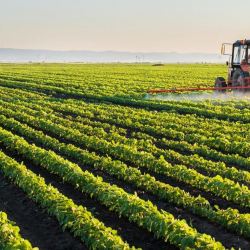
Due to concern about misapplication, or accidental spread, of the weedkiller dicamba in 2017, which harmed some crops that were not optimized for it, EPA has expressed concern about its use and was set to end registration but after meetings with scientists and the agriculture community has extended the date to end for use on genetically engineered cotton and soybeans to December 20, 2020.
They can extend it further at any time. In 2017, farmers without dicamba-resistant products suffered lost crops due to drift or misapplication and some contended it was the fault of the manufacturers.
Dicamba, first registered in 1967 and re-registered by EPA numerous times since, is an herbicide commonly used in late winter or early spring to remove growing weeds. It is used in corn fields, for wheat, cotton, soybeans, and more. It is popular because it works and any residues if people don't wash their food (1) are completely safe, including for infants and children, and it has no effect on bees or other pollinators. On average, EPA has about 800 requirements that must be met for a weedkiller to get registration and hundreds of studies are used in each evaluation so the dicamba issue took the agriculture community by surprise.
While decisions about the future are being made, EPA has issued new guidelines for "over-the-top" (use on growing plants) by farmers. Here are the highlights:
- Only certified applicators may apply dicamba over the top, so employees under the supervision of a certified applicator are no longer allowed. According to available data, some 90,000 applicators have been specifically trained with dicamba.
- Prohibit over-the-top application of dicamba on soybeans 45 days after planting and cotton 60.
- Cotton is limited to two over-the-top applications, soybeans remain at two.
- Applications will only be from 1 hour after sunrise to 2 hours before sunset
- In counties where endangered species may exist, the downwind buffer will remain at 110 feet and there will be a new 57-foot buffer around the other sides of the field (the 110-foot downwind buffer applies to all applications, not just in counties where endangered species may exist)
- Enhanced label to improve applicator awareness on the impact of low pH’s on the potential volatility of dicamba
- Label modifications to improve compliance
This is a win for 34 soybean and cotton producing states, even if some of it seems a little silly. If some people did not read the labels before, it is hard to say for sure they will now, but that is the best society can hope to do.
NOTE:
(1) You should wash your food, and that is coming from a guy who grew up on an organic farm. You wash food because of bacteria, not because of trace pesticide residues, either the conventional or alternative organic kind.



